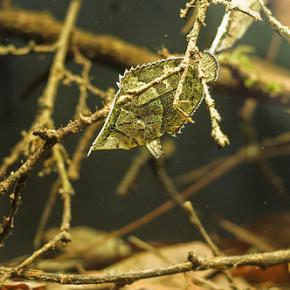
Monocirrhus polyacanthus
FAMILY
Nandidae
TAXONOMY
Monocirrhus polyacanthus Heckel, 1840, Marabitanos, Brazil.
OTHER COMMON NAMES
English: Barbeled leaf fish, South American leaf-fish; German:
Blattfisch; Spanish: Pez hoja.
PHYSICAL CHARACTERISTICS
Total length 3.9 in (10 cm). Body somewhat elongated, compressed,
and basslike. Profile of forehead is steep and rises to
the first dorsal spine at a point directly over the posterior edge
of pelvic fin. A narrow, lurelike organ extends forward from
the lower part of a protrusible mouth. Sharp dorsal, anal, and
pelvic spines. Body color yellowish bronze to light or dark
brown. Outer edges and tips of the anal, pelvic, and caudal fins
are dark brown. Narrow dark brown stripe runs obliquely from
a point midway up the forehead down through the eye, a second
similar stripe runs obliquely from the lower operculum to
the eye. A third, fainter band is found mid flank below the
dorsal fin.
DISTRIBUTION
South America, from Guyana south to Brazil and west into the
Peruvian Amazon.
HABITAT
Benthopelagic, primarily streams and rivers; often in association
with or near submerged vegetation.
BEHAVIOR
Cryptic. Often found floating motionless, like a leaf, or in the
cover of aquatic vegetation.
FEEDING ECOLOGY AND DIET
Carnivorous. An ambush predator that preys upon smaller
fishes, and aquatic insects and their larvae. Engulfs prey rapidly
by extending its large, protrusible mouth.
REPRODUCTIVE BIOLOGY
Gonochoristic. Demersal eggs are spawned and fertilized in a
nest prepared by the male. Male parental care of eggs. Eggs
hatch after three to four days and are free swimming by five
days.
CONSERVATION STATUS
Not listed by the IUCN.
SIGNIFICANCE TO HUMANS
Collected commercially for the aquarium trade.
Photo Gallery of - Amazon leaffish

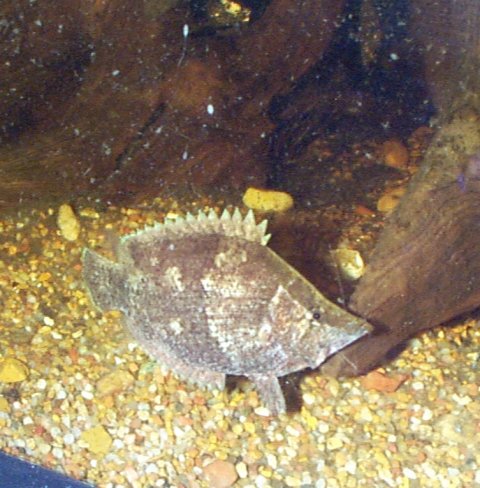
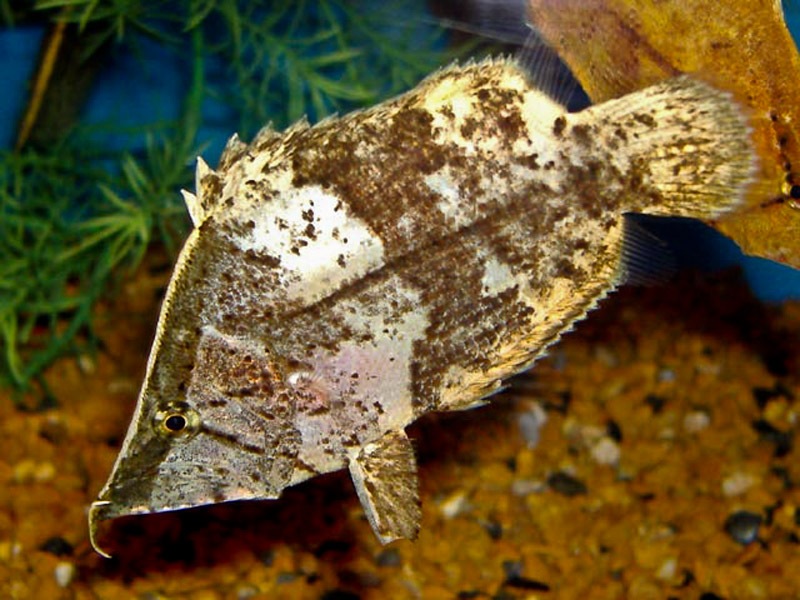
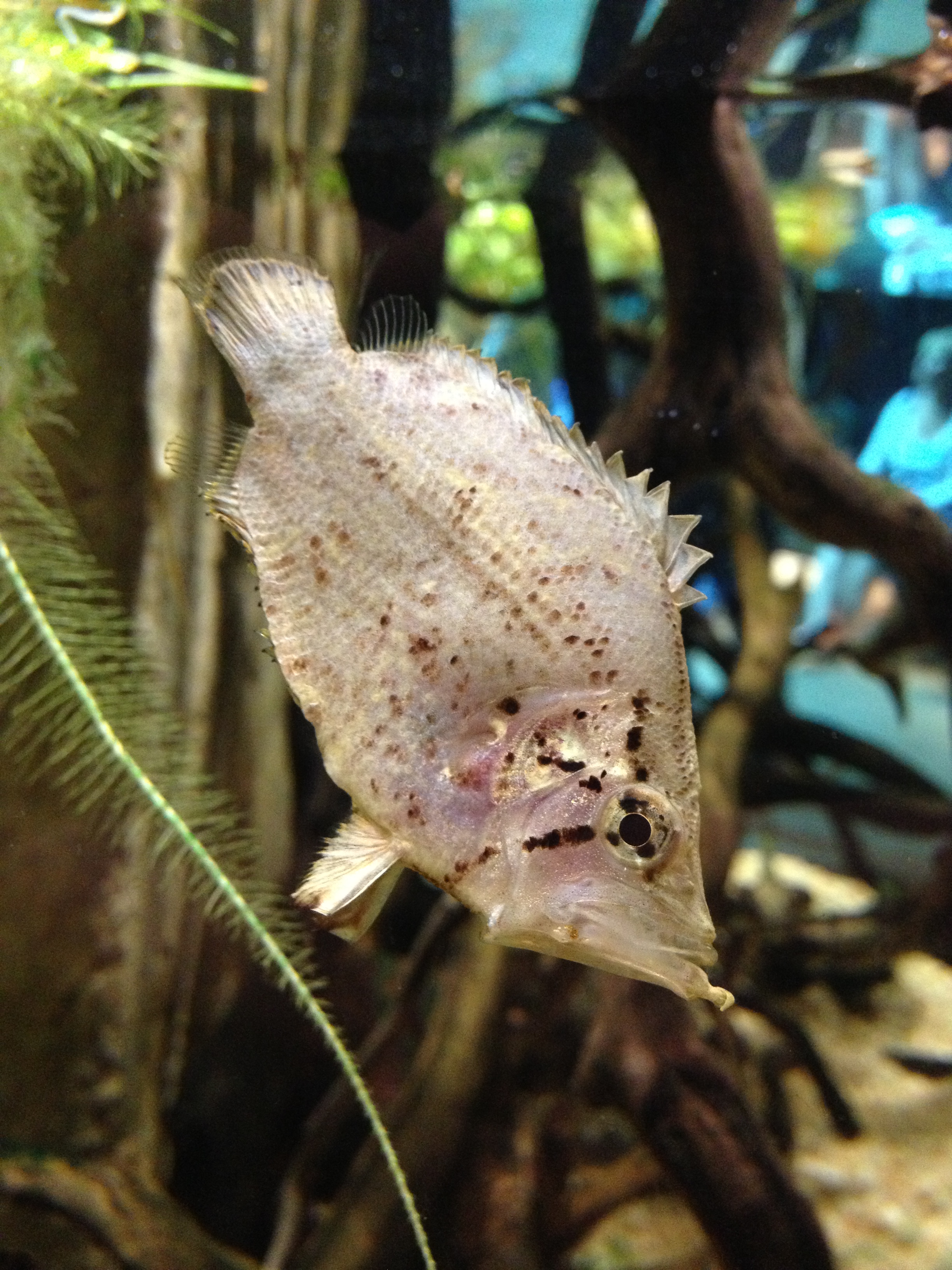
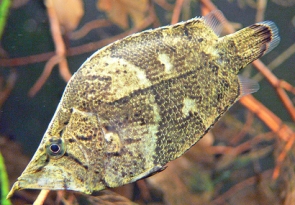
 Animalia Life
Animalia Life